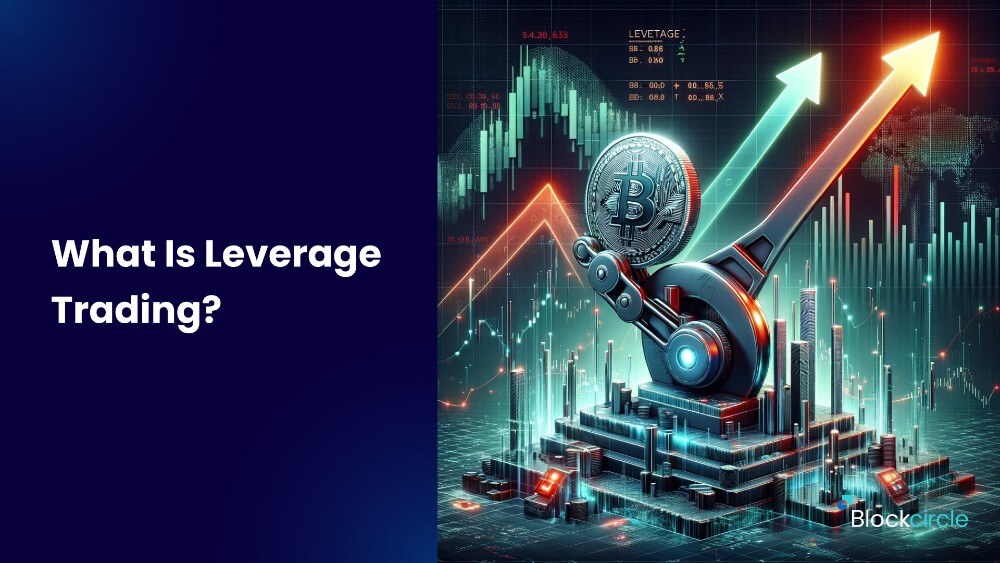Leverage Trading Cryptocurrencies
Leverage trading or Margin trading fundamentally means the borrowing of funds to increase your bet while you trade. It’s an aggressive form of trading where you are taking extra risk for the chance of extra reward. This is something you do when you think the odds are in your favor. If you want to trade using leverage, you must open a margin account with an exchange. In leverage trading, you can use the money offered by exchange or another user or a peer to peer loan option. The money which is in the margin account is only used as collateral for the loan. That means in leverage trading you can trade with more money than you actually have in your wallet. Leverages are basically notated in ratios or with an ‘X’ next to the times of leverage. So, the notation of two times leverage would be 2:1 or 2x.
Example 1
Let’s say Mark has $1000 and he is sure about the price action of a particular coin. He does 5x leverage trade in any of the major trading platforms. So now Mark is working with $5000. He doesn’t have $5000 but using 5x leveraging in the leverage trading platform he is playing with $5000. If everything goes as per Mark’s plan and he pulls in roughly around 10%, he is going to make $500 profit which he could have never got if he chose to trade conventionally and not leverage.
Example 2
You have 360 dollars with which you can buy an Ethereum. For some reason, you for sure know the price action of Ethereum in the near future. So, you want to trade aggressively and do 5 times leverage, that means you can buy 5 Ethereum with 360 dollars you have and if Ethereum increases by 5 dollars you get 5 times the gains. You get 5 times more. For every one dollar gain on Ethereum, you get 5 dollars.
Hence you can make a lot of money by leverage trading if and only if you for sure know the price action of the coin. Else it is extremely risky as you need to return the borrowed money to the exchange with interest charges if applicable. Not all exchanges charge you interest. That means if you bet on any cryptocurrency going up and it goes down or stagnates and you have to hold on to your coin, you will rack up interest in cases where interest is charged. If it goes down, you’ll owe what you borrowed plus any fees even though you lost money. You returning the borrowed money to the exchange irrespective of the result of that trade you took by leveraging is what makes the leverage trading risky.
Leverages can range from 1x, 2x, 3x, to 100x depending on the exchange. That means, if you have 0.1 bitcoin and if you do 100x leverage, you can trade with 10 Bitcoins or you can buy $10,000 worth of bitcoin with only $5,000 by borrowing 50%, AKA leveraging 2x. 2x leverage is recommended for beginners as trading on leverage is for advanced traders. You should not get into leverage trading unless you know proper Technical Analysis. It’s all about managing risk to reward.
There is a number of exchanges that loan you money and give you a margin. And the margin comes with a liquidation price and if the liquidation price hits, you are going to lose whatever you are putting in.
As you increase leverage, you are allowed to trade with more value and risk less but the trade will become riskier.
How does leveraged trading work?
You need to have enough funds to cover the bet you are taking. In case you don’t have the funds, your position will automatically be closed. It’s also known as liquidated or called in. Meaning, even if the lender will let you use their money for an interest fee to leverage trade, any money lost and any fees paid will come out of your funds. The exchange is letting you borrow money but they don’t want to take any risk of losing that money they lent.
In Leverage trading, you can either leverage short or long. When you short you bet on the price that it will be going down and if it goes up you lose money. When you long, you bet on the price that it will be going up and if it goes down you lose money. The amount you lose is based on the total size of the bid. The position doesn’t close until you close the position manually or at the price which is pre-set by you or the exchange calls your position in because you run out of funds allotted to the position.
What is a margin call?
Let’s say your total fund balance in your Marginal account falls below the Maintenance Margin Requirement (MMR) because of the price going in the opposite direction to your actual bet, the exchange will request the funds from you or will start to liquidate your assets to get its money back which was lent to you. You can offset the marginal call by depositing more funds to your marginal account. You increase the margin ratio and improve your call price when you deposit more funds.




